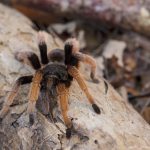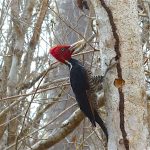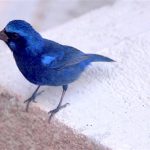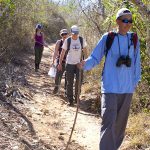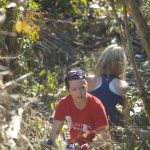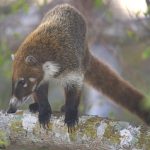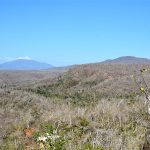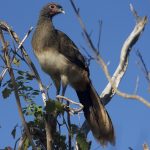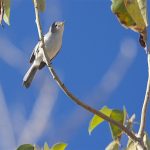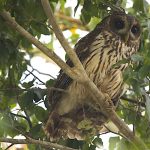ENGLISH
Thursday we arose to hear mottled owls (Strix virgata) in the distance before dawn. Javier used a playback loop to attract them to the courtyard between the residences, and there one of them resided throughout the day – with photo evidence in the gallery below. Throughout both of these days we had the usual avian visitors to the buildings including gnatcatchers, Western Mexican chachalacas (Ortalis poliocephala), and even some lovely blue buntings (Cyanocompsa cyana), as well as coatis as bold as their cousins the racoons back home.
Both Thursday and Friday were dedicated to group projects, ensuring that members of each group would have sufficient data for their individual term papers. Depending on the project, data collection required traversing the different trails most arrayed perpendicularly to the main trail Eje Central, like Tajon, Bujo and Calandia.The groups working on lizard diversity ( Aguila Elegante group – Rachel, Donna and Esmar, and Papi’s group – Nicole, Sam, Ulises and Jie Yuen) found it especially challenging as the hurricane damage has made a huge impact on the density of the under-story – making it all but impassable. As A and Da Boiz (Chris, Daniel G, Tristan and Amanda) are studying background matching in the house gecko (Hemidactylus frenatus), a native of Southeast Asia. They have created an arena with different quandrants of distinct colours, much of their testing is done at night.
Chamela is close to sea level with some nearby lovely sand beaches. The topography is quite rugged and sun reasonably intense especially as this is the dry season and most trees are devoid of vegetation – save for the gallery forests along side the now dry arroyos. This means we must carry lots of water and use lots of sunscreen lest we become dehydrated or sun burned.
ESPAÑOL
To come

